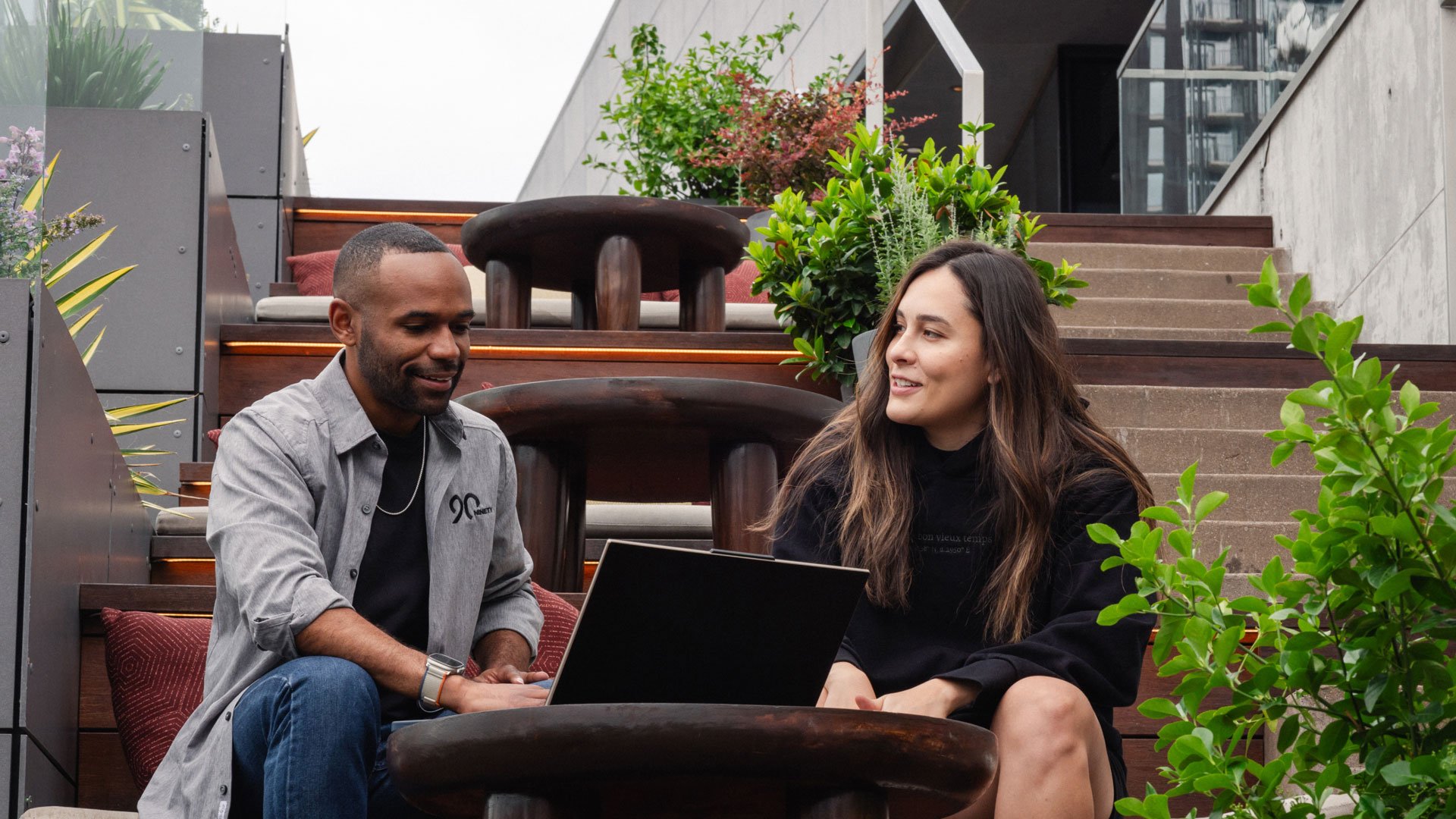The 7 Types of Human Relationships
I’ve been working on several books, including the upcoming Work 9.0, for several years. The basic question that led me down the path to creating these books has never changed: “What does it take to live a life where we become a better, more evolved version of the best version of ourselves?” As I deepened my understanding of a lot of topics, I also connected a number of dots in ways that have transformed the way I look at the world, especially when it comes to trust and human relationships.
One of the insights I acquired from my research is the notion that the vast majority of us have seven types of “relationships” and that our overall sense of well-being is largely dependent upon the health of those relationships. And as we’ll see, trust is essential to the health of any relationship.
This third installment of the updated Trust Series dives into the seven types of human relationships (7Rs). These include our relationships with:
- Others (our one-on-one relationships)
- Our tribes (the groups we’re a part of)
- Ourselves
- Physical objects
- Concepts (ideas)
- The universe
- Time
While I recognize that some people may dislike the term “tribe” because of historical baggage and denounce the value of the concept of tribes altogether when it comes to explaining human behavior, from my perspective, tribalism is an essential framework for understanding our relationships with ourselves and each other.
I share more about tribes in the On Ninety Guide because it’s impossible to talk about Ninety without talking about our G-TRIBE.
The 7Rs Model
The gist of the 7Rs model is this: The vast majority of us need to have a healthy and trusting relationship with all seven of these types. Life tends to get messy, or even objectively worse, when we let the needs of one of these types take precedence over one or more of our own needs or unalienable rights. Unalienable rights fall squarely into the fairness component of character-based trust (which I’ll talk about in more detail in a later article of this series). But for now, let’s discuss a few examples of unhealthy relationship dynamics as they relate to trust. Many of us face instances when:
- Our tribe attempts to isolate us when we try to make decisions for ourselves about who we associate with.
- We prioritize feeling safe over respecting each other’s emotional or physical boundaries.
- We focus so much on our present needs (our relationship with things) versus our future needs (our relationship with time) that we lack the necessary discipline to create long-term stability for ourselves, our families, or our tribes.
While each of the 7Rs is important for humans as individual entities, it’s my opinion that these types are also important to us as deeply tribal creatures. The reality is that soon after we’re born, we begin to see people not only as unique individuals but as prototypes (aka stereotypes) associated with particular tribes. As children, these tribes include caregivers, siblings, members of the same gender, cliques in school, and students at other schools. In time, virtually all of us find ourselves attracted to certain tribes and wary of others (and, yes, the production of oxytocin plays a crucial role here). And it’s no secret that the tribes we’re attracted to are the tribes we feel we can trust (whether or not we actually can is another question entirely).
Our natural attraction to tribes is rooted in the same core ideas as detailed by Abraham![]() Maslow in his Hierarchy of Needs. First, our familial tribe helps most of us meet our physiological and safety needs. Unlike cattle, horses, sheep, lions, and tigers — all of which can independently stand, grow, survive, and even hunt for food soon after birth — we’re born totally dependent upon at least one other human for a number of years, even decades, for our development. This includes interacting with lots of other humans and tribes before we’re likely to evolve into fully functioning, reasonably well-adjusted adults and have a decent shot of moving up Maslow’s Hierarchy of Needs.
Maslow in his Hierarchy of Needs. First, our familial tribe helps most of us meet our physiological and safety needs. Unlike cattle, horses, sheep, lions, and tigers — all of which can independently stand, grow, survive, and even hunt for food soon after birth — we’re born totally dependent upon at least one other human for a number of years, even decades, for our development. This includes interacting with lots of other humans and tribes before we’re likely to evolve into fully functioning, reasonably well-adjusted adults and have a decent shot of moving up Maslow’s Hierarchy of Needs.
 As we begin to explore the world outside of our families, we also begin to cultivate relationships with other individuals and with other tribes to help us meet our need for belonging. Then, as we transition into adulthood, we start to interrogate the tensions created by the conflicting needs of our various relationships, and sooner or later, the vast majority of us learn that we’re not rugged individualists.
As we begin to explore the world outside of our families, we also begin to cultivate relationships with other individuals and with other tribes to help us meet our need for belonging. Then, as we transition into adulthood, we start to interrogate the tensions created by the conflicting needs of our various relationships, and sooner or later, the vast majority of us learn that we’re not rugged individualists.
The consequence of this is as we get closer and closer to being self-actualized (the top of Maslow’s Hierarchy), our most valued tribes begin to be composed of groups of people who not only make us feel wanted, appreciated, safe, and inspired — but those we trust. This helps us become a better version of ourselves as we engage in Work that helps make the world a better place.
Tribes in the Workplace
To succeed in a tribe (especially one we've chosen as opposed to one we were simply born into), we should be neither significantly worse nor significantly better than the rest of our immediate group. Otherwise, interests or goals are likely to conflict, or competencies are likely either in excess of what’s needed or deficient. Obvious examples of this are team sports, especially contact sports, where it’s in no one’s best interest for one player to be three times the size of and three times more experienced than all the other players. But this also plays a significant role in workplace dynamics.
In the workplace, even the most talented worker needs other talented workers to help get their Work noticed. Consequently, we start to appreciate that we enjoy being with others, find security when we belong to a tribe, and also discover that our creative abilities are greatly enhanced by having strong relationships with complementary workers. By working together in this way, we can make things faster, easier, better, bigger, and more valuable, resulting in a culture where members of the tribe have mutual trust in one another.
It’s tough to create when we are in “reactor” mode (fearing for our lives or having someone trampling on one or more of our needs). As we continue to develop into fully formed, fully functioning adults, we find ourselves attracted to various tribes that help us figure out who we are. The reason we all belong to multiple tribes is that we are each extraordinarily unique and our self-actualization is dependent upon our interactions with others. It’s virtually impossible to become self-aware and achieve self-esteem without being able to compare ourselves to others and learn about what we’re really good at in the aggregate.
.png?width=450&height=503&name=Blog_Drawing_Sizes%20%5BHand_Drawn_Healthy_Tribes%5D%20(1).png) The types of groups we’re typically attracted to are based on several critical factors, including:
The types of groups we’re typically attracted to are based on several critical factors, including:
- Shared values (beliefs, behaviors, norms)
- Shared but complementary interests (what we like to do and learn about)
- Complementary competencies (what we bring to the table and vice versa)
- Shared goals (Vision and purpose, whether short- or long-term)
- Mutual respect for our rights
- Assistance with meeting our needs
- Availability of and ability to share resources
If a tribe’s Core Values, interests, competencies, goals, and respect for our unalienable rights and needs are not shared or complementary, it’s unlikely its members have any reason to associate with one another. In fact, it’s more than likely they will find themselves in some form of conflict. Unfortunately, this doesn’t necessarily mean the tribe will disband. Oftentimes, the culture will just devolve due to a lack of trust.
In time, as we get closer and closer to self-actualization, our most valued tribes are composed of groups of people who make us feel wanted, appreciated, safe, and inspired. In other words, these are people who we truly believe we can trust.
Building a High-Trust Company
In my opinion, if a worker wants to be involved in building a great company, they want to help build what I call a high-trust company (HTC). HTCs are companies where people feel like they belong and that they are meaningfully contributing by doing work that matters. In HTCs, team members trust the company and their colleagues, and the company trusts them. In turn, every team member in every Stratum feels connected to why the company exists and where the leaders want to take it. They believe their unalienable rights are respected and their needs are being met, and they want to meaningfully participate in the company’s journey.
Well-adjusted and enlightened workers (those who make decisions based upon their best interests over the longer run) minimize time spent with people who they don’t trust, who don’t respect their unalienable rights and needs, and who have materially conflicting values, interests, competencies, and goals. To retain great talent, a culture built on strong relationships centered around trust is at the core. Workers want to be a part of a tribe where they feel like they truly belong, and they know they will never be successful (whatever that means for them) unless they Work with people they trust.
- Part 1: Trust Is A Forever Work in Progress
- Part 2: What Is Trust?
- Part 4: The Math of Trust
- Part 5: Connection-Based Trust





